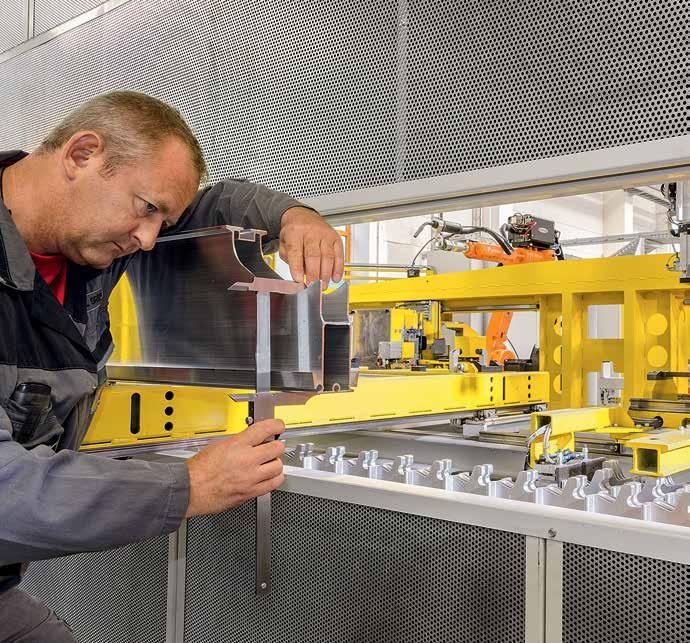
1 minute read
Low on-site material requirements
from Peri
Early striking with the drophead and fast deployment of the panels and beams in the next storey
The drophead facilitates early striking so that panels and main beams are quickly made available for subsequent concreting sections.
Advertisement
Depending on the slab thickness and strength of the concrete, striking can partly be carried out after only one day. One blow of the hammer releases the drophead and, in the process, the formwork is lowered by 6 cm. Main beams and panels can then be struck. In the field area, only the props remain in position together with the dropheads and cover strips. The props in the edge or compensation areas can however be removed.
Early striking minimizes on-site material requirements because many system components can be used earlier for the next cycle. In addition, work on the construction site can also be better compensated; for example, through early striking in bad weather or when there is spare capacity.
Easy and simple early striking: the formwork is lowered by 6 cm with just one blow of the hammer. After lowering the dropheads, the central panel is removed first followed by the neighbouring panels.
6 cm
View of the main beam after shuttering has taken place: the panels and cover strips form the underside of the concrete. View of the main beam with lowered drophead: the cover strips and dropheads remain in position while panels and beams are struck.

After early striking is finished, only the props with dropheads and cover strips remain in place. SKYDECK panels and beams are available for use in the next cycle.
The formwork assembly at the position of the drophead in the standard field. The formwork assembly at the position of the inset prop head on the wall junction.
An important application benefit
The extended length of the prop remains the same regardless of whether working in the standard field with the drophead, or at the wall junction with inset prop head.
0.41 0.41










